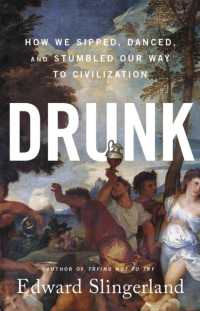- ホーム
- > 洋書
- > 英文書
- > Literature / Classics
Full Description
Fragmentary Modernism begins from a simple observation: what has been called the 'apotheosis of the fragment' in the art and writing of modernism emerged hand in hand with a series of paradigm-shifting developments in classical scholarship, which brought an unprecedented number of fragmentary texts and objects from classical antiquity to light in modernity. Focusing primarily on the writers who came to define the Anglophone modernist canon -- Ezra Pound, T.S. Eliot, Hilda Doolittle (H.D.), and Richard Aldington, and the artists like Jacob Epstein and Henri Gaudier-Brzeska with whom they were associated -- the book plots the multiple networks of interaction between modernist practices of the fragment and the disciplines of classical scholarship. Some of the most radical writers and artists of the period can be shown to have engaged intensively with the fragments of Greek and Roman antiquity and their mediations by classical scholars. But the direction of influence also worked the other way: the modernist aesthetic of gaps, absence, and fracture came to shape how classical scholars and museum curators themselves interpreted and presented the fragments of the past to audiences in the present. From papyrology to philology, from epigraphy to archaeology, the 'classical fragment', as we still often see it today, emerged as the joint cultural production of classical scholarship and the literary and visual cultures of modernism.
Contents
Introduction
1: Papyrus
2: Editions
3: Inscriptional Modernism
4: Modernism and the museum: Making, Consuming, and Displaying Sculptural Fragments in the British Museum
5: Archaeologisms
Postscript: After Modernism








